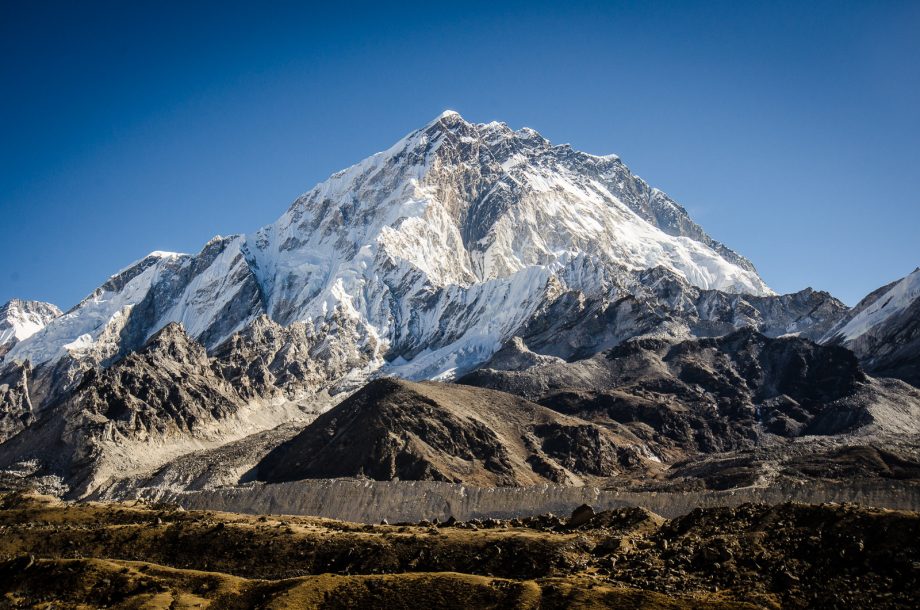EBC Day 11 – Everest Base Camp
EBC Index
Altitude Sickness
That morning, a sad farewell took place in Lobouche (elevation : 4940 m) amongst a group of hikers from New Zealand. One of the party members apparently had been suffering from a bad headache and had just begun mumbling unintelligibly. It was wisely decided that he would need to make a quick descent back down to lower elevations, whilst the rest of the party continued up to Gorak Chep (elevation : 5164 m). I say wise because the ataxia and altered mental status indicated an onset of HACE. As one ascends to higher elevations/altitudes, the saturation of the atmospheric gases decreases, which results in mild hypoxia--a deficiency in the amount of oxygen that reaches the body tissues. One's breathing and heart rate are then forced to increase in order to combat this hypoxia. The capillaries in the body also dilate, and there is a chance of capillary leakage that may cause swelling (edema). When at high-altitude, the general issues that you are likely to encounter are headaches, trouble sleeping, dyspnea (shortness of breath) during exertion, and a cough. Without sufficient acclimatisation however, these issues can progress to altitude sickness, the mildest of which is 'Acute Mountain Sickness' (AMS). Normally one is diagnosed with AMS if one has a headache and at least one of the following:
If you encounter any of those signs and symptoms, it is important to stop your ascent and rest, and consider a descent of 500 metres or more. Treat the symptoms with analgesics and antiemetics as necessary, and consider the administration of acetazolamide (125 to 250 mg twice daily), otherwise known as 'Diamox'. Acute mountain sickness can progress to 'High-Altitude Cerebral Edema' (HACE), a condition that is potentially fatal.AMS : Nausea / vomiting / dizziness / fatigue / lassitude (physical or mental weariness) / persistent inability to sleep

HACE & HAPE
When the signs and symptoms above begin to deteriorate and the patient begins to show the following, it is normally an indication that they now have 'High-Altitude Cerebral Edema' (HACE):
High-Altitude Cerebral Edema (HACE) occurs when fluid leaks into the brain. This presents as brain swelling and an increase in intracranial pressure (ICP). High-Altitude Pulmonary Edema (HAPE) on the other hand, occurs when fluid leaks from the capillary beds in the lungs and into the alveoli, and causes swelling of lung tissue. HAPE tends to develop several days after arrival at moderate altitudes of (3000 m to 4000 m), and normally begins with pulmonary hypertension which presents itself as shortness of breath, fatigue, dizziness, and cyanosis, before progressing to the following:HACE : Ataxia (lack of muscle coordination which may affect speech) / altered mental status / signs that indicate an increase in intercranial pressure (ICP) such as nausea and vomiting
For HACE and HAPE, it is important to minimise exertion and to keep the patient warm before making an immediate descent and evacuation. For HACE, oxygen should be administered at a rate of 2-4 l/min, but for HAPE, the initial administration of oxygen should be at a rate of 4-6 l/min until conditions improve, after which the rate is then lowered to 2-4 l/min. Moderate HAPE can quickly deteriorate into severe HAPE in a matter of hours, which will ultimately result in respiratory failure and eventual death. Pulmonary edema can sometimes persist for days after a descent has been made and quite often requires hospital observation and treatment. Bear in mind that patients with severe HACE are unlikely to survive without aggressive intervention.HAPE : difficulty breathing that worsens when lying down / wheezing / anxiety / cough that produces frothy or bloody sputum

Next (Day 11) : Everest Base Camp (Part 2)
EBC Index




